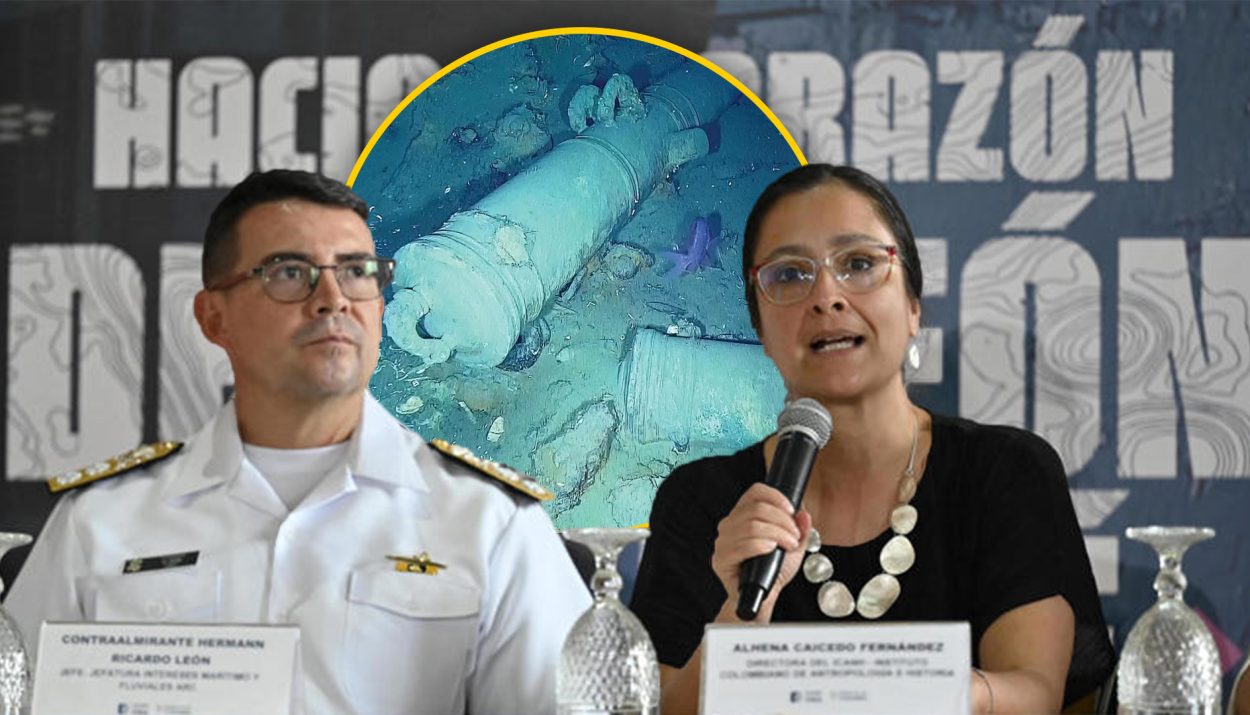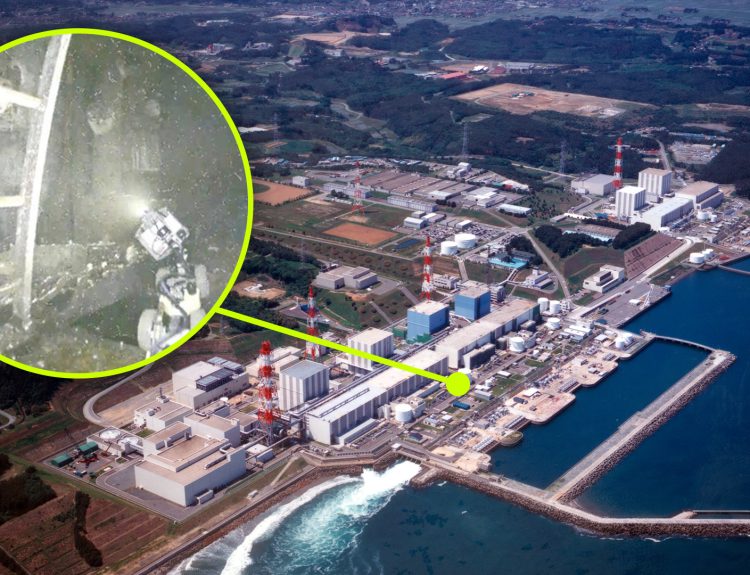The vast treasure was recovered from the wreck of the San Jose, a Spanish galleon that sank over 300 years ago while carrying gold, silver and precious gems mined in Peru and bound for Spain.
The ship went down in 1708 during a battle with British ships in the Caribbean Sea. Now, after decades of searching, a team of marine archaeologists has successfully brought a portion of the fabled riches to the surface. The recovered artifacts include gold coins and bars, jewelry, silverware, cannons and other items that were on board when the galleon was lost.
Remotely Operated Vehicle Reveals Shipwreck Details
According to a statement from Colombia’s Vice President Marta Lucia Ramirez, a remotely operated vehicle reached 900 meters below the surface of the ocean and captured new images of the shipwreck. The video shows gold ingots and coins, cannons from 1655, and an intact Chinese dinner service.
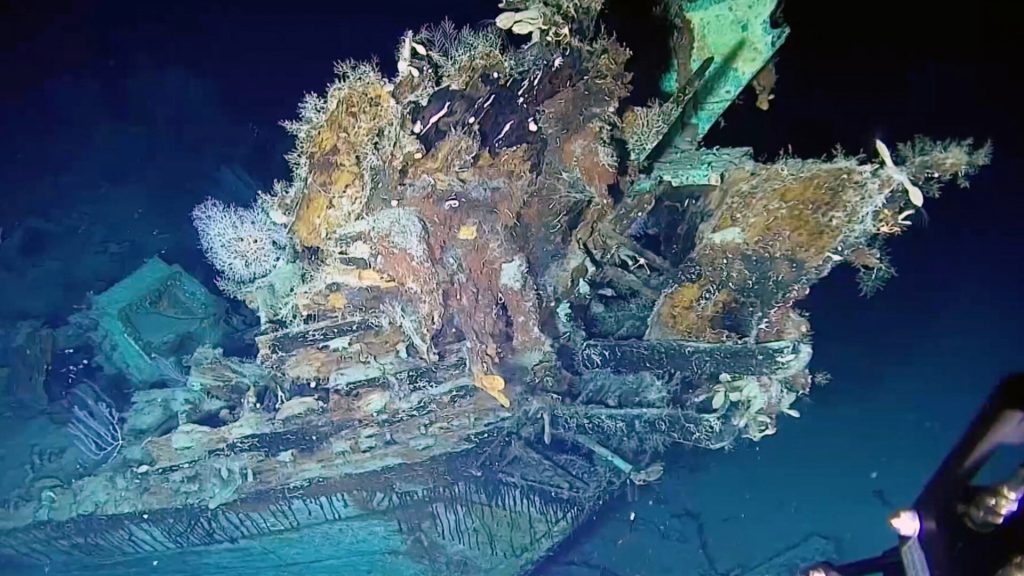
The vehicle also found two other nearby shipwrecks, including a 19th-century schooner. The discoveries demonstrate the archaeological potential of the area. The Vice President described the treasure as “invaluable” and said the responsibility to protect the artifacts had already been assumed, contributing to the history of Colombia, the Caribbean, and the world.
Preserving National Heritage
The government considers the San Jose shipwreck a national treasure and wants to build a museum in Cartagena to display items from the wreck. An expedition will use a robot to recover select artifacts from the surface of the shipwreck to determine how best to extract further items. The goal is to recover portions of the treasure without damaging the wreck.
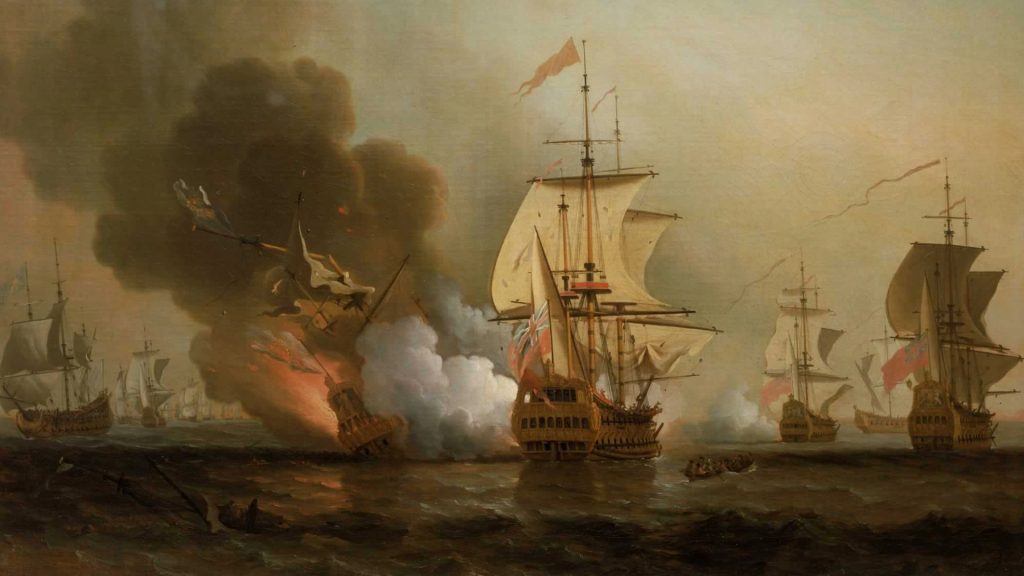
The operation follows a case before the Permanent Court of Arbitration over rights to the shipwreck. A U.S. salvage company claims it found the wreck first, but Colombia asserts sovereignty over the San Jose. The new leftist government wants to use Colombia’s resources to preserve the shipwreck and ensure its heritage remains in the country. Indigenous groups have also expressed interest in protecting the wreck.
The History Behind the Legendary San Jose Galleon
The San Jose galleon has captivated the imagination of treasure hunters and maritime archaeologists alike for centuries. The ship was a Spanish galleon that sank off the coast of Cartagena, Colombia, in 1708. At the time, the ship was carrying gold, silver, and precious gems valued at billions of dollars today.
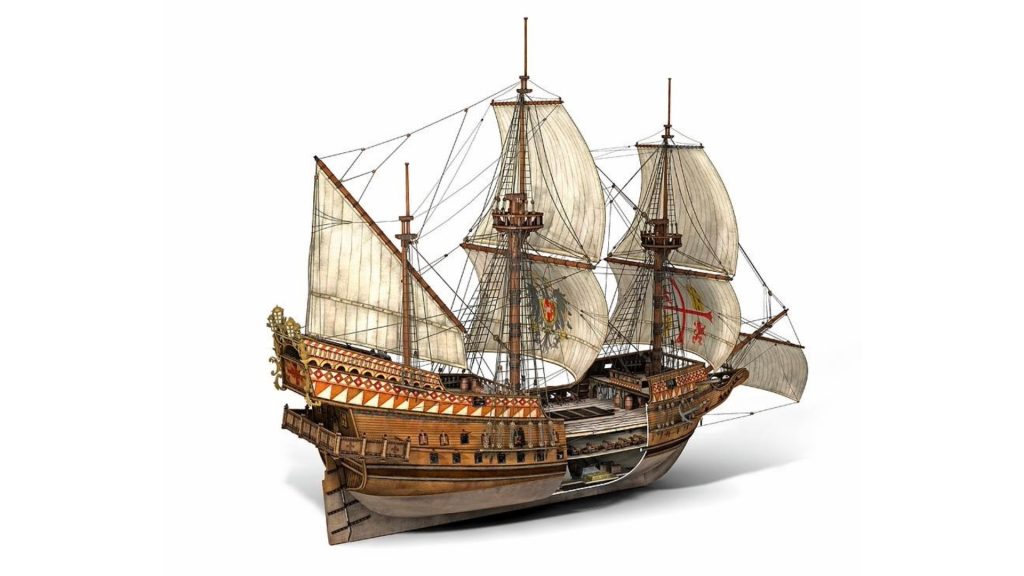
The San Jose was one of the ships belonging to the Spanish treasure fleet tasked with transporting riches from Spain’s colonies in the Americas back to Europe. The ship was heading from Portobelo, Panama, to Cadiz, Spain, when it was intercepted by British ships and sank during the Battle of Cartagena de Indias.
The Discovery and Controversy
The wreckage of the San Jose was discovered in 2015 off the coast of Cartagena, Colombia 2015, at a depth of 600 meters. The discovery of the long-lost ship led to disputes over who had rights to its valuable cargo. Spain claimed the contents of the ship as the San Jose was a Spanish vessel.
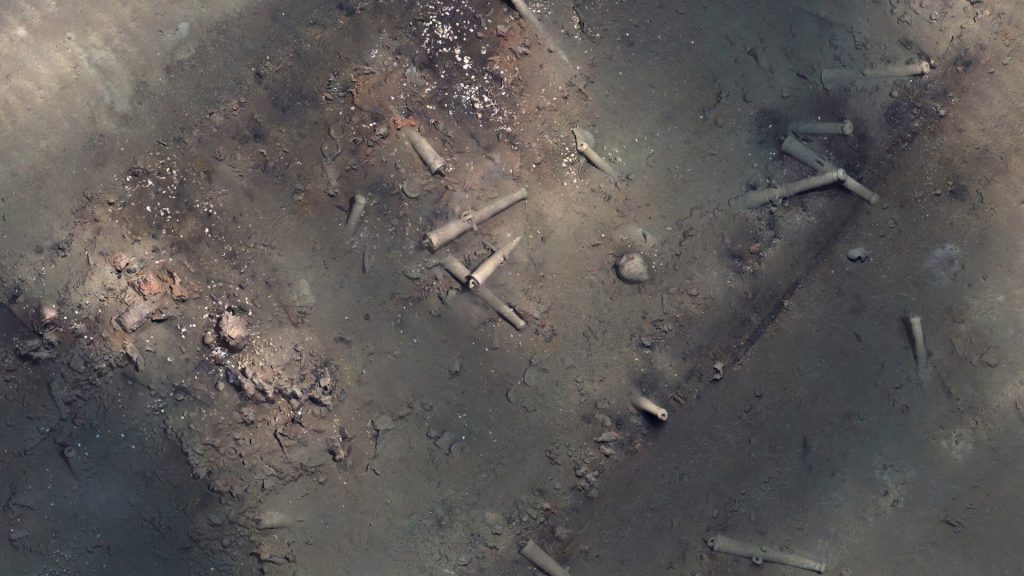
Indigenous groups in Bolivia also staked a claim, arguing that their ancestors were forced to mine the gold and silver aboard the ship. The Colombian government has asserted that the wreckage and any artifacts recovered from it constitute Colombian national heritage.
Plans to Recover Treasures
Colombia’s government announced plans to recover some of the priceless artifacts from the legendary shipwreck. An underwater robot will extract items from the surface of the shipwreck to determine how best to retrieve the remaining treasures while preserving the wreckage.
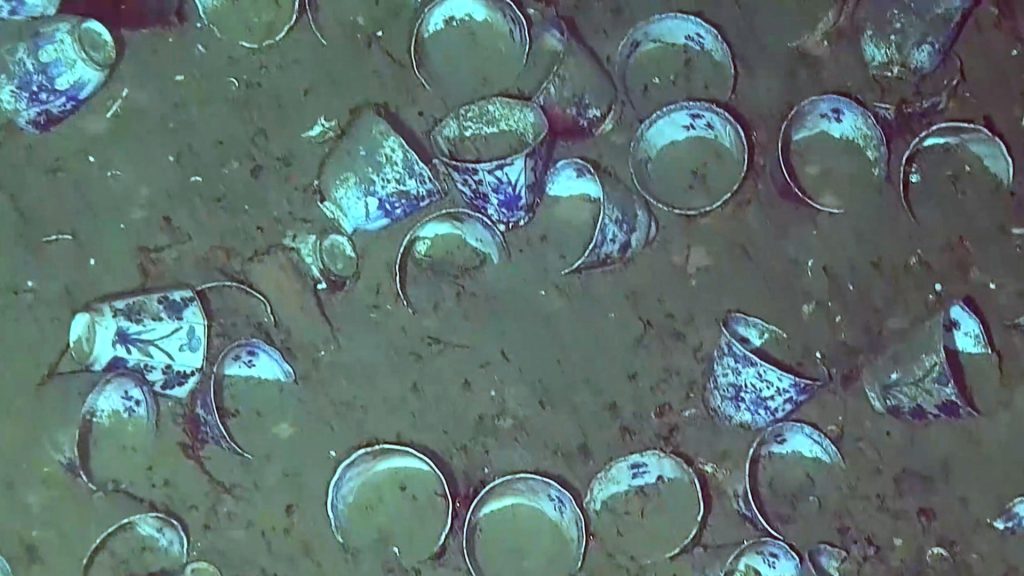
The recent footage provides the first glimpse of the immense wealth contained within the shipwreck. After more than 300 years under the sea, the bounty remains largely intact, a time capsule of the colonial era. The discoveries demonstrate the potential for further archaeological exploration in the region.
Estimated Value of the San Jose Galleon Treasures
New video footage of the wreckage shows gold coins and ingots scattered around the ship. Gold from across South America, especially modern-day Peru and Bolivia, was stored in the fort of Cartagena before being shipped back to Spain. The large volume of gold and silver coins and ingots on board would be worth billions today based on the current market price of the precious metals.
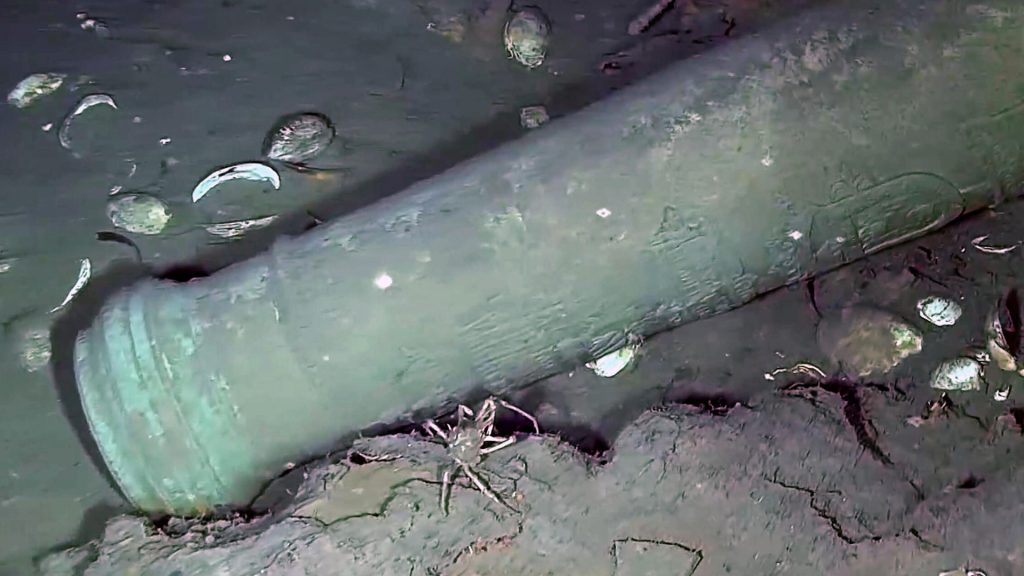
In addition to gold and silver, the San Jose was also transporting a substantial number of emeralds and other gemstones. Emeralds were mined in Colombia during the colonial period and were an important export.
Other Valuables
The ship was also carrying other valuable items like cannons, a Chinese dinner service, and navigational equipment. Well-preserved artifacts from the early 1700s would be priceless for museums and private collectors. While the monetary value of these types of goods is difficult to determine precisely, items from shipwrecks of a similar age and origin as the San Jose galleon have sold for tens to hundreds of thousands of dollars at auction.
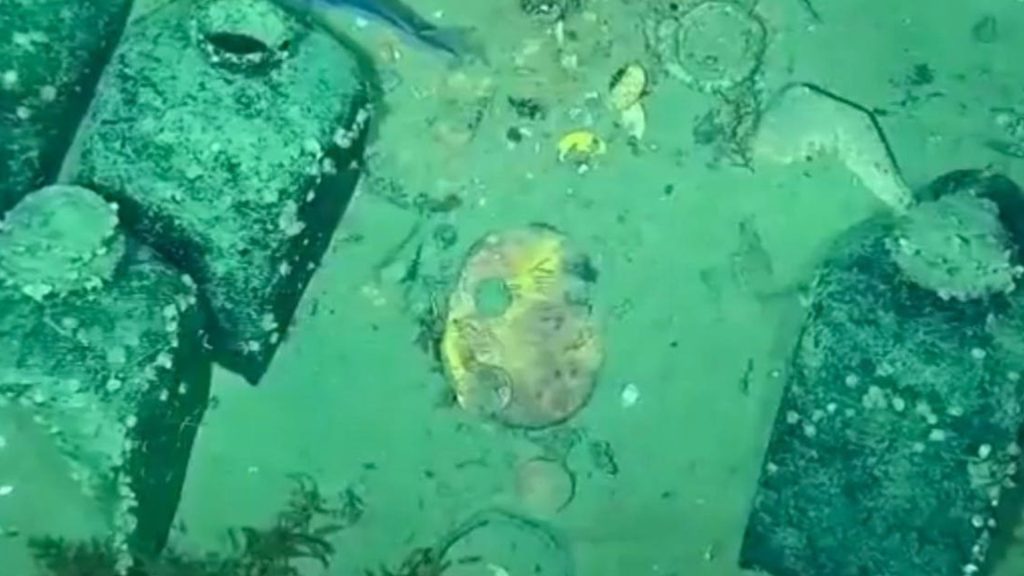
The combined value of the gold, silver, emeralds, and other artifacts on board the San Jose galleon is conservatively estimated to be in the billions of dollars, making it one of the most valuable shipwrecks ever discovered.
A Complicated Legacy
While the discovery of San Jose brings excitement, its treasure is a reminder of a complicated history. The massive amounts of gold and other riches highlight the human cost of colonization and the immense profits gained through the exploitation and oppression of indigenous groups.

The shipwreck serves as an important symbol of this history and a reminder of the injustices of the past. By preserving and displaying items from San Jose, Colombia can educate future generations about the country’s colonial experience and promote ongoing reconciliation.
Conservation of Artifacts
Recovering artifacts from a shipwreck as old as the San Jose requires extremely careful conservation efforts to prevent deterioration once exposed to air. The items must be slowly acclimated to the change in environment to avoid damage.
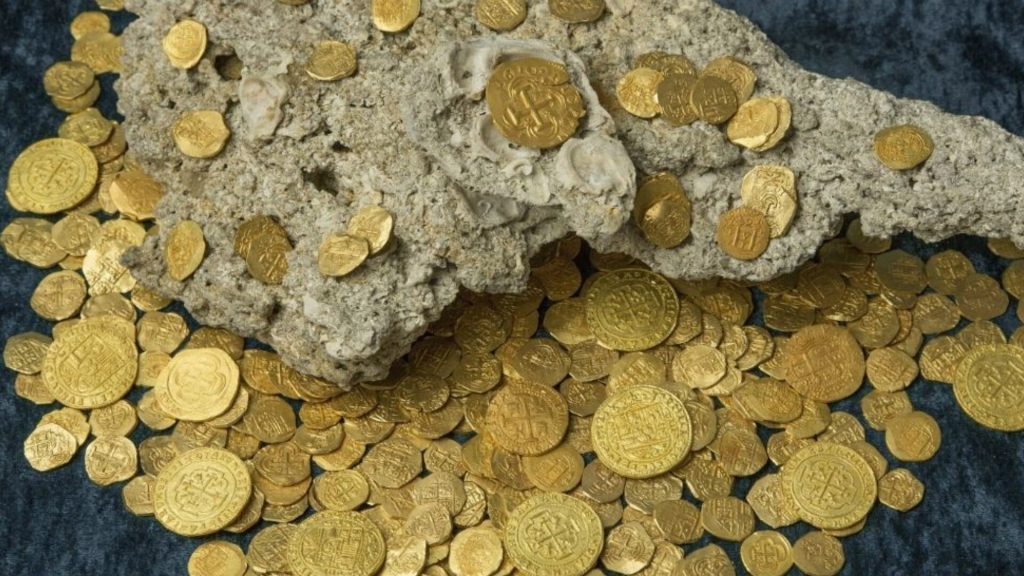
As some artifacts are recovered, experts can examine them to determine the best methods for retrieving and preserving the remaining contents. However, extraction may prove difficult and could irreparably damage some pieces.
Conflicting Claims from Spain and Bolivia
There are conflicting claims over ownership of the treasure from the San Jose shipwreck. The government of Spain asserts that it maintains ownership of the bounty because the ship was a Spanish galleon. However, the Qhara Indigenous group of Bolivia argues that they should receive the treasure, as their ancestors were forced into slave labor by the Spanish to mine the gold and silver.
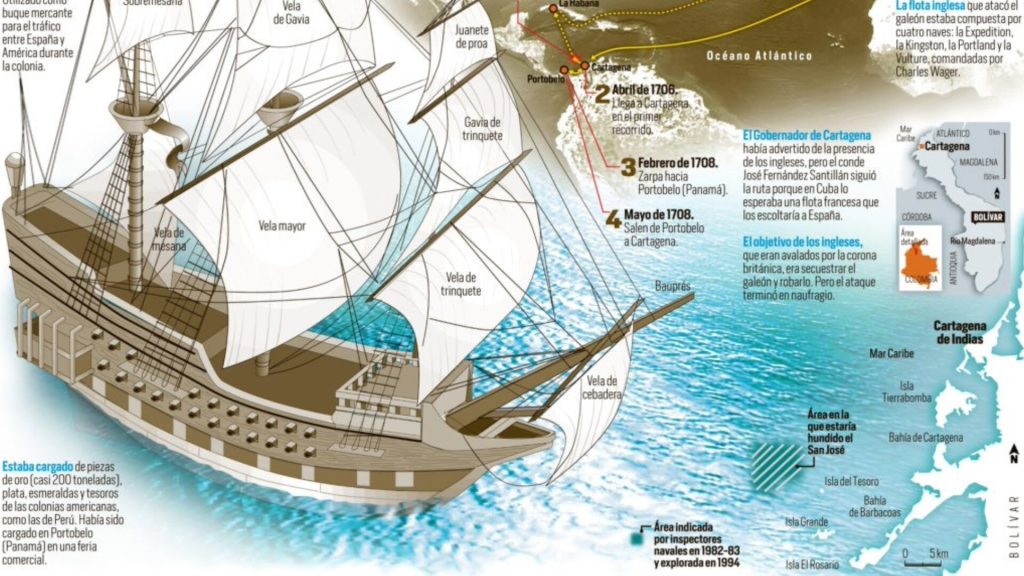
Spain’s ambassador to Colombia has offered to sign a “bilateral agreement” with Colombia on the protection and ownership of the shipwreck. This type of agreement could provide a legal framework for cooperation between Spain and Colombia while allowing the artifacts to remain in Colombia.

